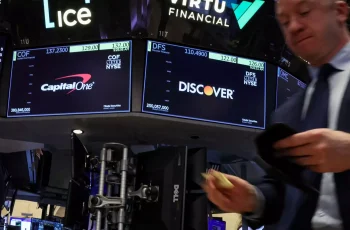The financial landscape is witnessing a seismic shift as once-exclusive investment strategies, typically enjoyed by elite clients on Wall Street, are gradually permeating the Main Street investment arena. This transformation is exemplified by major institutions like JPMorgan Chase and BlackRock, which are now enabling retail investors to access diverse and sophisticated investment strategies through Exchange-Traded Funds (ETFs). As speculation mounts around market corrections and an uncertain economic forecast, these financial powerhouses are ambitiously venturing into private credit and advanced equity income lenses. What was once the realm of high-net-worth individuals is now being tailored for the average investor.

The conversation surrounding these ETF innovations was significantly highlighted by Ben Slavin of BNY Mellon during a recent conference in Las Vegas, revealing a vibrant demand for alternatives. Investors increasingly seek vehicles that can navigate the complexities of today’s economic climate, stressing the urgency for financial institutions to adapt and innovate to meet these desires. It’s a clear indication that the financial elite’s playbook is no longer a hidden manuscript; rather, it is being rewritten for broader participation.
The Rise of Private Credit ETFs
One of the most intriguing facets of this shift is the rise of private credit ETFs—models that were historically riddled with illiquidity and restricted access. Even though the SEC recently sanctioned the first private credit ETF, its approval was not without its controversies. Such financial products promise to not only allow access to alternative investments but also introduce an innovative liquidity mechanism that traditional private markets lacked. This contradiction encapsulates the very essence of today’s financial evolution—where innovations are challenging long-held distrusts and skepticism.
Significantly, these emerging private credit ETFs could democratize the means through which investors partake in private lending markets. Conventional wisdom suggests they were designed for accredited investors only; however, the ETF structure offers a solution to circumvent these constraints by providing a more accessible and cost-effective alternative. Yet, therein lies the caveat: the quality of the underlying assets may need to be diluted for the sake of broader accessibility.
Income-Generating Active ETFs
In the current market environment, where volatility looms large, income-generating active ETFs have surfaced as a popular trend, capitalizing on the growing demand for stable yields. Strategies such as those employed by the JPMorgan Equity Premium Income ETF and its Nasdaq counterpart utilize options trading to deliver returns while mitigating risk exposure. This approach may appeal to investors looking for assurance rather than mere growth. The strategy revolves around selling call options to generate income—a mechanism traditionally reserved for wealthier clients with sophisticated portfolios—now being packaged into user-friendly ETFs.
The calculated risk associated with this income strategy appeals to many, especially those weary of recent market dips. Furthermore, as Travis Spence of JPMorgan noted, such active strategies captivate investors seeking both participation in equity markets and the financial comfort provided by premium income. This dual advantage marks a shift in investor mentality—aiming not only for growth but also for consistent income.
The Buffer ETF Trend
As investors grapple with anticipated market downturns, products like buffer ETFs are gaining traction. These financial instruments are engineered to cap both potential upside and downside risks, effectively providing a safety net for those looking to re-enter the market without the fear of devastating losses. Such products are particularly attractive to conservative investors who’ve been sitting on the sidelines, skittish after the substantial market declines. The allure of minimal downside risk while maintaining exposure to equities is a potent tool for easing investor anxiety.
Goldman Sachs’ buffered products represent a transformative approach within the realm of ETFs, with solid performance metrics sparking growing interest among retail clients. The historical hesitance to invest during down years is counteracted by the participation these innovative structures promote, allowing individuals unsettlingly stuck in cash positions to tread into the equity space again.
The Future of ETF Strategies
Although the innovation within ETFs is reshaping investment access, it’s crucial to approach these developments with a discerning lens. There is a risk of over-simplification, where a complex investment idea is repackaged into a convenient format that may lack the depth needed for informed decision-making. Indeed, while the democratization of once-exclusive investment strategies marks a notable progression for investor empowerment, it begs the question: Are retail investors truly equipped to navigate this new arena?

One cannot undermine the inherent liquidity concerns that have persisted. As these financial instruments evolve, investors must tread cautiously and maintain critical awareness of the potential downsides. The growing excitement around private credit ETFs and active income strategies should not overshadow the fundamental principles of informed investing. The future of ETFs might shine brightly, but this newfound accessibility demands a balanced understanding of both the opportunities and responsibilities it entails.

